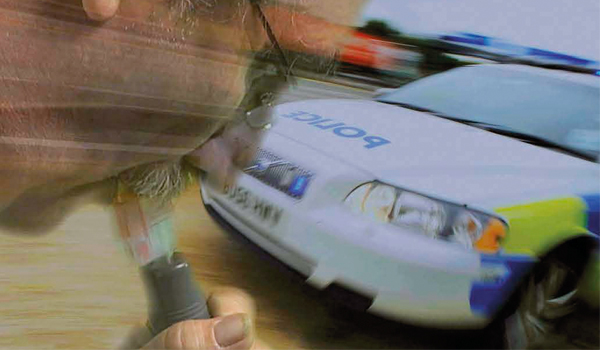July forecasted to see 8 per cent surge in drink-driving as summer peak begins
July is expected to be the “catalyst month” for a summer surge in drink-driving offences, according to figures released by a motor insurer.
Using data supplied by the Metropolitan Police Service following a Freedom of Information request, car insurance specialists Keith Michaels found July has been forecast as the month where drink-driving figures start to increase significantly.
The data showed that in 2021, there was a marginal increase in drink-driving figures from May to June, with only a 0.6 per cent increase. However, from June to July, there was an increase of 7.8 per cent, followed by 4.5 per cent in August – the second highest figure of the year with 536 offences.
The figures have been released as a leading road safety campaigner has called for the drink-drive limit in the UK to be reduced by three quarters to remove ‘legal but lethal’ drivers from our roads.
The limit in England, Wales and Northern Ireland is currently 0.80‰BAC (80 mg of alcohol per 100 ml of blood).
However, Hunter Abbott, a breath alcohol testing expert and member of the Parliamentary Advisory Council for Transport Safety (PACTS) argues that it should be lowered to 0.20‰.
Writing today (July 4) on the Road Safety GB website, Mr Abbott points out that the current limit is the highest in Europe and the joint highest anywhere in the developed world.
“Our limit of 0.80‰BAC is far above the ‘point of intoxication’ of around 0.30‰BAC where significant measurable effects on cognitive function start to occur” says Mr Abbott.
“The bottleneck which is stopping us from reducing drink-drive crashes further is the keystone of our drink-drive law – a lax limit based on extremely limited scientific data in the 1960s to define what was ‘safe’. More recent and robust research shows at 0.80‰BAC you are 13 times more likely to have a fatal accident than when sober. In Scotland, with its lower limit of 0.50‰BAC, a fatality is still five times more likely.”
The data revealed by Keith Michaels showed December as the month with the most drink-driving offences at 627 – more than 240 than February, the month with the lowest number. August was the second highest month, with 536 total offences, and July following closely with 513 offences.
The research also found that most drivers were not caught driving in a state in which they were unable to drive properly, but that they had a blood alcohol level that was just too high.
Across the year in 2021, the average number of offences was 16 a day, or 461 a month. New Year’s Day had the most offences (46) – the highest figure of the year and 2.9 times the annual average.
“January 1 is a prime example of drivers not being out of control of their vehicle as a result of drink, but that their blood alcohol level was still above the legal limit from the night before,” said the insurer.
Although August was the month with the second most offences of drink-driving, the data showed there were no days with more than 32 offences, unlike December, which hit 46 offences.
Instead, the month was made up of regularly higher figures, with eight days of August seeing more than 25 offences a day – the highest total all year apart from December, which had 11 days with 25-plus offences.
However, annual and forecasted drink-driving figures suggest that by 2023, drink-driving could hit a six-year low – from 6,378 offences in 2019 to 5,406 in 2023.
An estimated 6,480 people were killed or injured on Britain’s roads in 2020, latest figures from the Department for Transport show, where at least one driver was over the drink-drive limit. This includes 220 fatalities, with drivers over the legal limit causing 15 per cent of all road deaths. The number of casualties caused by drivers who are intoxicated but legal to drive is not recorded, but is thought to balloon this figure significantly.
“How many casualties could have been avoided if the driver were below the point of intoxication, instead of lethal but legal”, said Mr Abbott, who is also managing director of breathalyser firm AlcoSense Laboratories.
“That’s why I’m calling on the Government to reduce the limit to 0.20‰BAC. It’s low enough so that someone can have a small drink with a meal in a restaurant and drive an hour later. It also gives a ‘buffer’ against contaminants which could, on very rare occasions, give a low level false positive reading from a breathalyser.
“It’s a ‘safe’ and practical limit to police and with the right educational programme around it, one which I’m sure most responsible road users would support”.
David Davies, executive director of PACTS commented: “Driving while legal but lethal is an area of great concern. PACTS has consistently called for a lower legal limit. Laws help to set social norms, as we have seen with bans on smoking in public places. PACTS also wants to see better enforcement by the police and the use of alcohol interlocks to prevent reoffending”.
James Gibson, executive director of Road Safety GB, adds: “Road Safety GB’s advice to motorists is always – if you drive, don’t drink and if you drink, don’t drive.
“We support lowering the blood alcohol limit and as a first step, would like to see the Government bring the limit down from 80mg in 100ml of blood to 50mg. This limit would then be in line with most European countries.”


